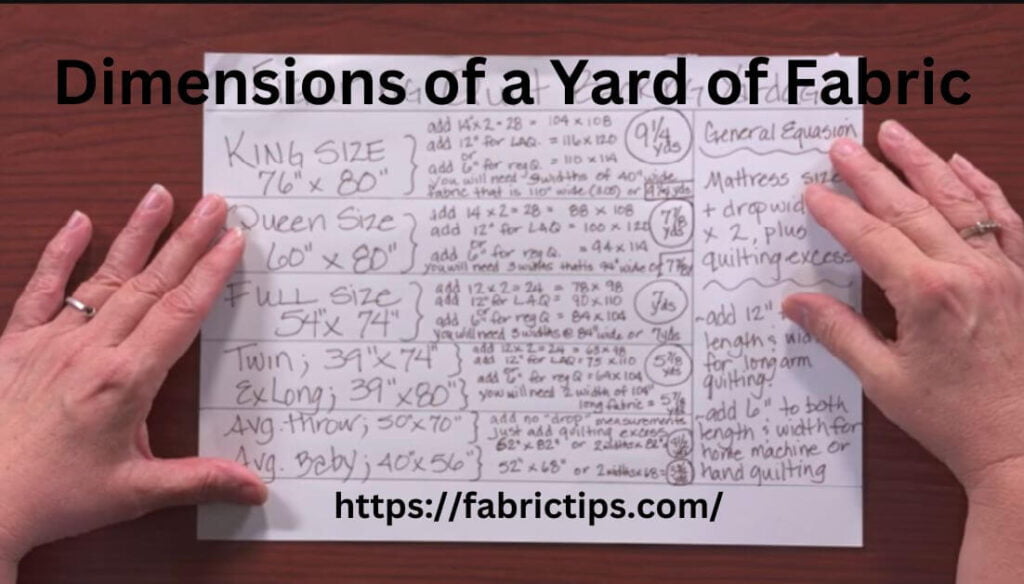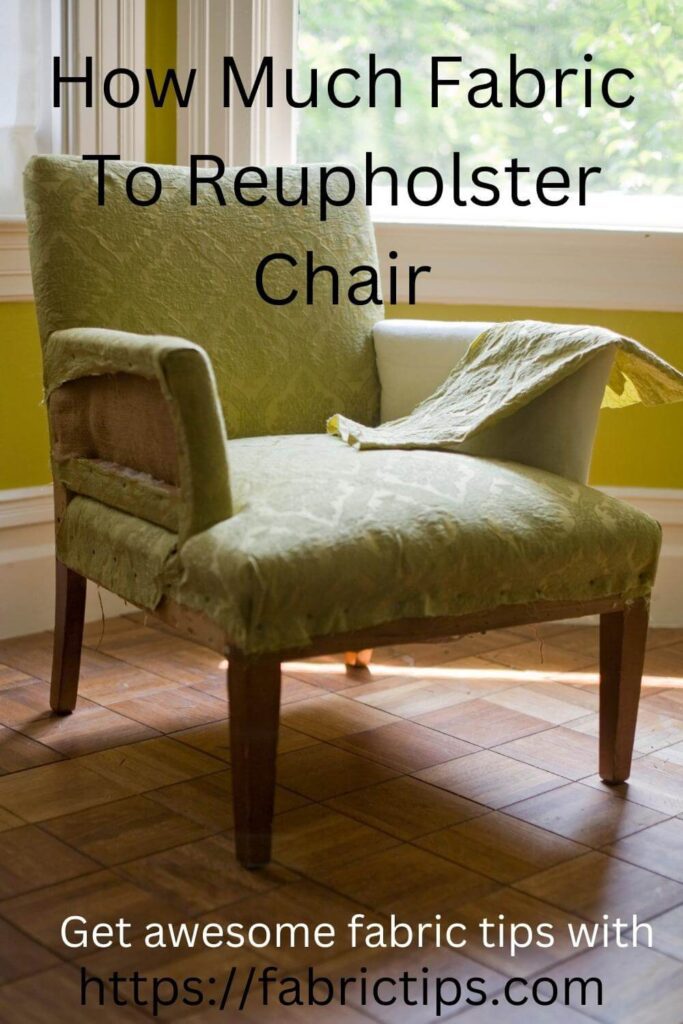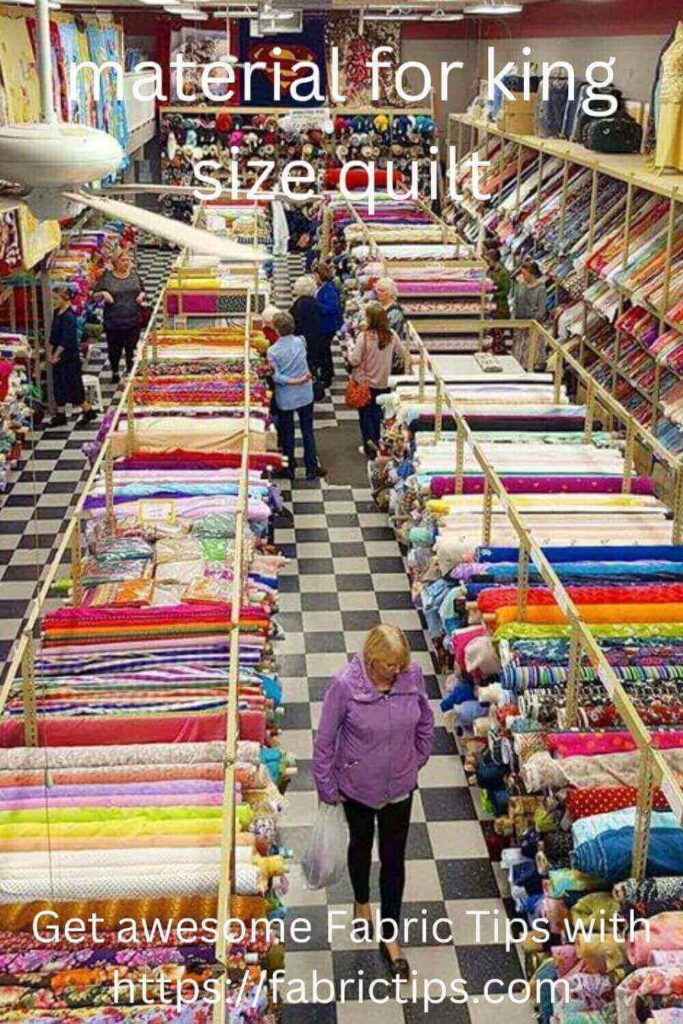Last Updated on December 13, 2025 by Wahid
Have you ever stood bewildered at a bolt of fabric, wondering, “Is a yard REALLY enough for my project?” How to pick the dimensions of a yard of fabric? Fear not, fellow crafters!
Remember:
- A yard is a unit of length equal to 36 inches (3 feet), but the width of fabric varies!
- Always consider both the length (in yards) and the width (in inches) when purchasing fabric.
- Mastering basic calculations empowers you to estimate fabric needs accurately.
With this Newfound Knowledge, You Can:
- Shop for fabric like a pro: Confidently navigate fabric stores & online listings, understanding the information displayed.
- Plan your projects effectively: Avoid the stress of running out of fabric midway through a project.
- Reduce fabric waste: By calculating precisely, you can minimize leftover scraps, saving money & promoting sustainable sewing practices.
Hence, grab your sewing supplies, unleash your creativity, and embark on your next project with confidence. You’ll unlock the secrets of fabric dimensions, and the world of sewing is your oyster. This guide cuts through the confusion surrounding fabric dimensions, specifically the enigmatic “yard.” Well, let’s go below.
Dimensions of a Yard of Fabric: Length & Shocking Secret!
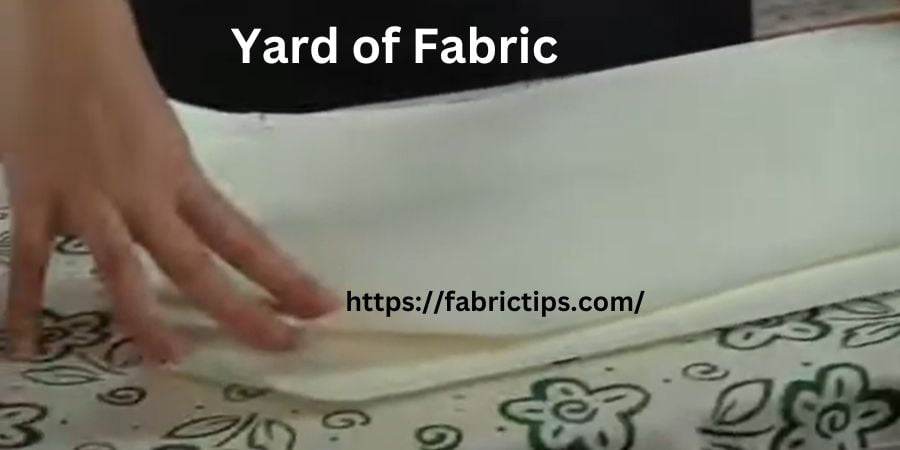
Ever stared at a bolt of fabric, mesmerized by its vibrant colors and textures, only to be stumped by the cryptic “yard” measurement? You’re not alone! Many crafters get tripped up by the seemingly simple “yard.”
Here’s the first truth: A yard is a unit of length, like a ruler, but it equals 36 inches (or 3 feet) – that part’s straightforward.
But wait, there’s more!: Unlike its consistent length, the width of a yard of fabric can be a shocking secret. It’s not always 36 inches wide.
Here’s the shocker: Fabric width can range from a full 36 inches (considered “wide width”) all the way down to a narrow 22 inches or even less.
The Key Takeaway: When it comes to fabric, you need to consider both the length (usually in yards) & the width (in inches) to determine how much fabric you’ll need for your project. Not knowing this secret can lead to disaster – imagine buying a “yard” of fabric, only to find it’s not wide enough for your project.
This guide will equip you with the knowledge to conquer any fabric dimension, ensuring your next sewing masterpiece is perfectly sized from the get-go. Thus, buckle up, fabric warriors, and get ready to banish yard-related mysteries forever.
Visual Feast: Fabric Dimension Charts for the Discerning Crafter
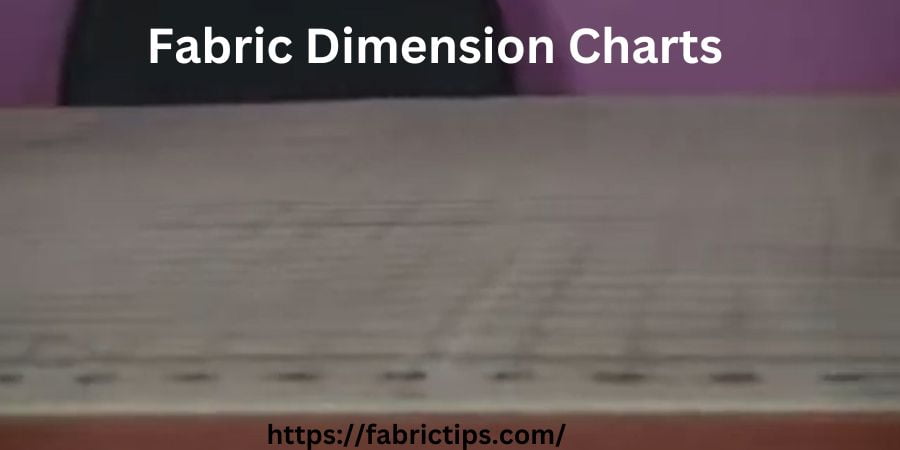
Now that you know a yard isn’t just a yard when it comes to fabric width, let’s dive into a visual smorgasbord of fabric dimension charts. These charts will be your key to deciphering the cryptic language of fabric bolts and ensuring your project planning is on point.
Standard Fabric Widths
Get ready to banish confusion with this handy chart that breaks down common fabric widths and their uses:
| Width (inches) | Description | Examples |
| 36-44 | Full Width / Wide Width | Quilting cottons, apparel fabrics, upholstery fabrics |
| 45-60 | Home Decor Width | Drapery fabrics, tablecloths |
| 18-22 | Narrow Width | Ribbons, bias binding, trims |
Fabric Measurement Conversion Chart
Need a quick conversion cheat sheet? Look no further! This chart translates yards into inches for those “just in case” moments:
| Unit | Equivalent in Yards | Equivalent in Inches |
| Yard (yd) | 1 | 36 |
| Half Yard (1/2 yd) | 0.5 | 18 |
| Quarter Yard (1/4 yd) | 0.25 | 9 |
| Eighth Yard (1/8 yd) | 0.125 | 4.5 |
Remember: These charts are just a starting point. Always check the specific fabric you’re interested in for its exact width measurement, displayed on the bolt or online listing.
How Big is One Linear Yard of Fabric?
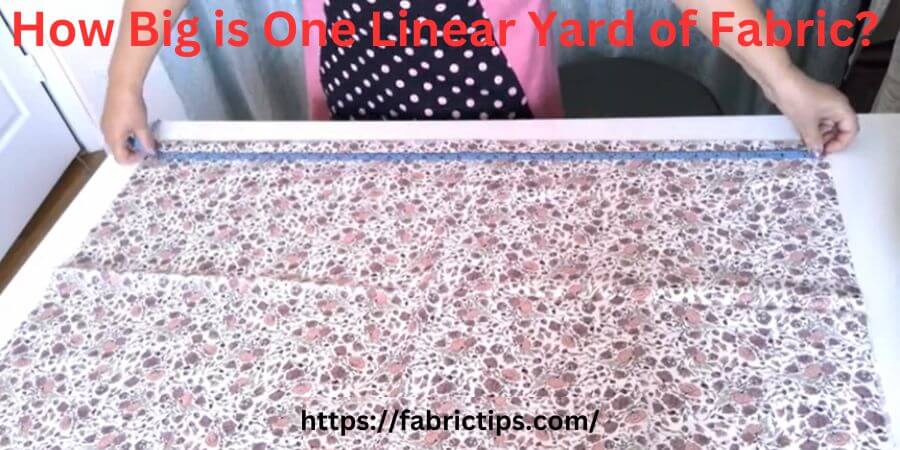
You’ve clearly explained the concept of a linear yard and how it relates to fabric measurement. Here are some suggestions to make it even stronger:
- Avoid redundancy: Since you’ve already established a yard is 36 inches in the previous section, you can remove that part from this explanation.
- Emphasize the key point: Reiterate that a linear yard refers only to the length, and width is a separate consideration.
Here’s a revised version incorporating these suggestions:
How Big is One Linear Yard of Fabric? Separating Length from Width
Actually, one linear yard of fabric focuses solely on its length, regardless of its width. Imagine a long, continuous bolt of fabric. A single linear yard would be a 36-inch segment cut from that length.
The Key Point: When purchasing fabric, it’s usually sold by the linear yard. However, you can often specify the exact length you need (e.g., 1.5 yards) cut from the bolt. Remember, you’ll still need to consider the fabric’s width to determine how much you’ll need for your project.
Exposure Fabric Width Mystery: Not All Yards Are Created Equal!
We’ve established that a yard’s length is a constant 36 inches, but here’s where things get interesting. The width of a yard of fabric can be the plot twist that throws even seasoned crafters for a loop.
The Shocking Truth: A yard of fabric can be as wide as 36 inches (considered “full width” or “wide width”) & as narrow as 22 inches or even less (considered “narrow width”). This variation depends entirely on the type of fabric.
Imagine this: You buy a “yard” of fabric, assuming it will cover a certain area based on its length. But surprise! The fabric is only 22 inches wide, leaving you scrambling for more to complete your project.
The Solution: To avoid this pitfall, always refer to the fabric’s width information displayed on the bolt or online listing. Look for a label or description that specifies the width in inches.
Here’s a Pro Tip: When shopping online, some retailers might list the fabric by the “usable width” which takes into account potential selvages (the finished edges) that you might not want to include in your project. Be sure to check the details to avoid any confusion.
Ultimately, by keeping the width mystery in mind, you can ensure you purchase the perfect amount of fabric for your next sewing adventure.
Mastering the Calculations: Conquering Fabric Needs Like a Pro
Feeling confident with fabric dimensions? Now, let’s translate that knowledge into practical skills. Here’s a step-by-step guide to calculating exactly how much fabric you need for your project:
1. Measure Your Project Area:
Grab your measuring tape and become a mini-architect! Measure the length and width of the area your fabric needs to cover. For example, if you’re making a dress bodice, measure the distance from shoulder to hem & across the front from side seam to side seam.
2. Factor in Seams and Ease:
Seams are essential for holding your project together, so don’t forget to account for them! Typically, seam allowances range from 1-2 inches. Ease refers to extra fabric that allows for movement & comfort in garments. Consider adding ease to dresses, shirts, and pants, but it’s not necessary for things like tote bags or placemats.
3. Calculate Fabric Length:
Now for some math magic! Add your seam allowances (if applicable) to each project measurement you took in step 1. Then, multiply this adjusted length by the number of fabric pieces needed for your project. For example, a dress front and back would require two pieces of fabric with the adjusted length.
4. Consider Fabric Width:
Remember the width mystery? Here’s where it comes into play! Divide the total fabric length you calculated in step 3 by the width of the fabric you’re planning to buy. This will tell you how many yards you’ll need to purchase. For instance, if your project requires 50 inches of fabric in total and you’re buying quilting cotton that’s 44 inches wide, you’d need to divide 50 by 44, which equals approximately 1.14 yards.
Pro Tip: Round up to the nearest whole yard! It’s always better to have a little extra fabric than to run out in the middle of your project.
Demystifying Fractions: Half Yards, Quarter Yards, and Beyond!
When it comes to fabric, yards aren’t the only players on the field. You might also encounter fractions of a yard, like half yards (18 inches) and quarter yards (9 inches).
These are Simply Smaller Measurements Cut From a Full Yard
However, by following these steps and keeping the fabric width in mind, you’ll be a fabric-calculating champion in no time. No more scrambling for extra material – you’ll be a master of measuring & have the perfect amount of fabric for every project.
Beyond Yards: Unveiling Fabric Quantities for Sewing Success
We’ve conquered yards, mastered widths, and become calculation wizards! But what about visualizing how much fabric a yard (or a fraction of a yard) actually represents? Here’s a cheat sheet to help you estimate fabric quantities for common projects:
- 1 Yard: This versatile length can be your go-to for a variety of smaller projects. Imagine using it to create a:
- Small table runner: Perfect for adding a pop of color to your dining table.
- Standard pillowcase: Sweet dreams are guaranteed with a freshly made pillowcase!
- Child’s skirt (depending on size): Whip up a cute and comfy skirt for your little one.
Remember: Fabric width plays a role here. A yard of wide fabric (like quilting cotton) will yield more than a yard of narrow fabric (like ribbon).
Let’s explore some fractions of a yard:
- Half Yard (1/2 Yard): This handy measurement is ideal for:
- Placemats: Protect your table and add a touch of style with homemade placemats.
- Tote bags: Eco-friendly and endlessly customizable, tote bags are a great half-yard project.
- Simple headbands or neckties: These quick and easy accessories add a finishing touch to your outfit.
- Quarter Yard (1/4 Yard): Don’t underestimate the power of a quarter yard! It’s perfect for:
- Fat quarters: These pre-cut squares are ideal for quilting, patchwork, and other small projects.
- Bias binding: Add a polished look to your projects with homemade bias binding.
- Embellishments or appliques: Spruce up a plain garment with a splash of color or texture using fabric scraps.
Yes, this is just a starting point, and the possibilities are truly endless. As you gain experience, you’ll develop an intuition for how much fabric different projects require. But with this guide as your foundation, you can confidently estimate fabric needs and avoid underestimating or overspending.
Bonus Tip: Many online fabric retailers offer project calculators on their websites. These tools can be a great resource for estimating fabric needs for more complex projects.
FAQs
Q-1. Is a yard of fabric always 36 inches wide?
Answer: Nope! That’s the surprising secret about yards. While the length of a yard is always 36 inches, the width can vary significantly. Common fabric widths range from 36-44 inches (full width) down to 18-22 inches (narrow width). Always check the specific fabric you’re interested in for its exact width measurement on the bolt or online listing.
Q-2. How many feet are in a yard of fabric?
Answer: There are actually 3 feet in a yard of fabric! So, you can use feet or yards to describe the length of fabric, but it’s more common to use yards when purchasing fabric.
Q-3. How much fabric do I need for a project?
Answer: This depends entirely on the project. There are a few ways to estimate how much fabric you’ll need:
- Pattern instructions: Many sewing patterns will specify the amount of fabric needed for the project, including yardage and width requirements.
- Project measurements: Measure the area your fabric needs to cover and factor in seam allowances & ease (extra fabric for movement) if necessary. Divide the total length needed by the fabric width to get the yardage required.
- Online fabric calculators: Many fabric retailers offer online calculators that can help you estimate fabric needs based on project measurements.
Q-4. What is the difference between a yard, a half yard, and a quarter yard?
Answer: These terms simply refer to the length of fabric you’re purchasing.
- Yard (yd): This is the full length, equivalent to 36 inches.
- Half yard (1/2 yd): This is half the length of a yard or 18 inches.
- Quarter yard (1/4 yd): This is a quarter of the length of a yard or 9 inches.
Fabric stores and online retailers typically sell fabric by the yard, but you can often purchase specific lengths like half yards or quarter yards.
Q-5. What can I make with a yard of fabric?
Answer: The possibilities are endless! Here are some ideas depending on the fabric width:
- Wide width (36-44 inches): Small table runners, pillowcases, children’s skirts, and shirt bodices.
- Medium width (45-60 inches): Draper panels, tablecloths, & some clothing projects (depending on size and style).
- Narrow width (18-22 inches): Ribbons, bias binding, appliques, quilt binding.
Q-6. I’m buying fabric online. How do I know how wide the fabric is?
Answer: Look for the fabric width information displayed on the online listing. This will usually be listed in inches next to the fabric description or price. Some retailers might list the “usable width” which takes into account selvages (finished edges) that you might not want to include in your project. Be sure to check the details to avoid any confusion.
Q-7. What if I buy the wrong fabric width?
Answer: Don’t panic! Depending on the project, you might be able to adjust the pattern or design to accommodate the width you have. If not, you can always return or exchange the fabric (check the store’s return policy).
Q-8. Are there any standard fabric widths?
Answer: Yes, there are some common fabric widths, but they can vary depending on the fabric type and manufacturer. Here’s a general guideline:
- Quilting cottons, apparel fabrics, & upholstery fabrics: 36-44 inches (wide width)
- Drapery fabrics, tablecloths: 45-60 inches (home decor width)
- Ribbons, bias binding, trims: 18-22 inches (narrow width)
Q-9. I’m a beginner sewer. What should I keep in mind when buying fabric?
Answer:
- Start with a project that uses a small amount of fabric.
- Choose a fabric that’s easy to work with, like quilting cotton.
- Always consider both the length (in yards) and the width (in inches) when purchasing fabric.
- Don’t be afraid to ask for help from fabric store staff! They can answer your questions and recommend fabrics for your project.
Conclusion: Farewell Yard Mysteries, Hello Sewing Confidence!
Farewell to the confusion surrounding the dimensions of a yard of fabric! This comprehensive guide has equipped you with the knowledge to conquer any fabric dimension challenge. You’ve unveiled the truth about yard lengths, wrestled the fabric width mystery to the ground, & mastered the art of calculating fabric needs.
We revealed the truth about yard lengths, expose the secret life of fabric widths, and equip you with the knowledge to conquer any project with confidence. Get ready to transform from a fabric-dimension foe to a conquering hero!
